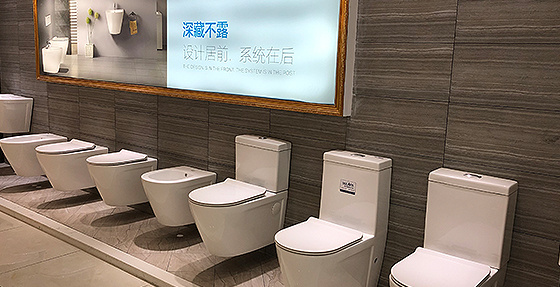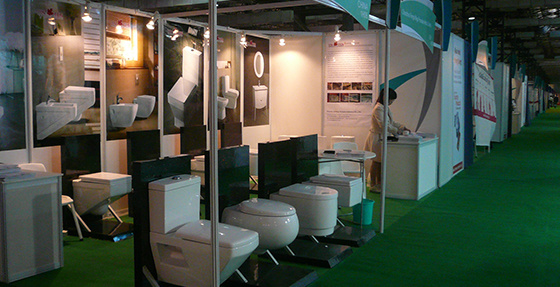Combining Comfort and Style: Wall Mounted Toilet Tanks Explained
Release time:
2025-08-06
Combining Comfort and Style: Wall Mounted Toilet Tanks Explained Introduction to Wall Mounted Toilet Tanks When it comes to modern bathroom design, wall-mounted toilet tanks have emerged as a popular choice for homeowners and designers alike. These sleek fixtures not only maximize space but also add a touch of sophistication to any bathroom. In this article, we will delve into the features, benefi

Combining Comfort and Style: Wall Mounted Toilet Tanks Explained
Introduction to Wall Mounted Toilet Tanks
When it comes to modern bathroom design, wall-mounted toilet tanks have emerged as a popular choice for homeowners and designers alike. These sleek fixtures not only maximize space but also add a touch of sophistication to any bathroom. In this article, we will delve into the features, benefits, and installation of wall-mounted toilet tanks, as well as how they can seamlessly blend comfort with style.
What Are Wall Mounted Toilet Tanks?
Wall-mounted toilet tanks are a type of toilet that features the tank installed directly on the wall, typically hidden behind the wall. This design provides a minimalist look, making it an excellent option for small bathrooms or those seeking a contemporary aesthetic. Unlike traditional toilets, where the tank is prominently displayed, wall-mounted tanks create a streamlined appearance.
The Advantages of Wall Mounted Toilet Tanks
Investing in a wall-mounted toilet tank comes with numerous benefits that enhance both functionality and style in your bathroom.
Space-Saving Design
One of the most significant advantages of wall-mounted toilet tanks is their space-saving design. By allowing the tank to be concealed within the wall, these toilets free up floor space, making the bathroom appear larger and more open. This feature is particularly beneficial for compact bathrooms where every inch counts.
Enhanced Aesthetics
Wall-mounted toilet tanks offer a modern, sleek appearance that can elevate the overall design of your bathroom. With a variety of styles and finishes available, you can easily find a model that complements your decor, whether it’s minimalist, industrial, or classic.
Easy Maintenance
With wall-mounted toilets, maintaining cleanliness is more straightforward. The lack of a visible tank means fewer nooks and crannies for dust and grime to accumulate. Additionally, many models feature smooth surfaces that are easy to wipe down.
Water Efficiency
Many wall-mounted toilet tanks are designed with water-saving features, such as dual-flush systems. This allows users to choose between a full and half flush, promoting water conservation without sacrificing performance. This aspect not only benefits the environment but also reduces water bills.
Choosing the Right Wall Mounted Toilet Tank
Selecting the perfect wall-mounted toilet tank for your bathroom involves considering several factors, including style, size, and functionality.
Styles of Wall Mounted Toilet Tanks
There are various styles of wall-mounted toilet tanks to choose from, each offering a unique aesthetic and functionality.
Contemporary Designs
For those looking to embrace a modern look, contemporary wall-mounted toilet tanks feature clean lines, bold finishes, and often come equipped with advanced flushing technologies. These designs are perfect for minimalist and industrial-style bathrooms.
Traditional Styles
If your bathroom leans more towards a traditional design, there are wall-mounted toilet tanks available that mimic classic features, offering a timeless feel without sacrificing modern efficiency.
Size and Dimensions
When choosing a wall-mounted toilet tank, it’s crucial to consider the dimensions of your bathroom. Typically, wall-mounted tanks are designed to fit within standard wall cavities, but it’s essential to measure your space accurately to ensure a proper fit.
Rough-In Measurement
The rough-in measurement refers to the distance from the wall to the center of the drainpipe. Standard rough-in measurements for wall-mounted toilets typically range from 12 to 14 inches, but it’s important to check your existing plumbing to ensure compatibility.
Installation of Wall Mounted Toilet Tanks
Installing a wall-mounted toilet tank requires careful planning and execution. While it’s advisable to hire a professional plumber for installation, understanding the process can help you prepare for the project.
Steps for Installing a Wall Mounted Toilet Tank
Here’s a brief overview of the installation process for wall-mounted toilet tanks:
1. Preparing the Wall
The first step involves removing any existing fixtures and preparing the wall where the toilet will be mounted. This may include patching holes or making adjustments to plumbing.
2. Installing the Carrier Frame
Next, a carrier frame must be installed within the wall. This frame acts as a support structure for the toilet and tank. It is essential to ensure that the frame is level and securely anchored to the wall studs.
3. Connecting Plumbing
Once the carrier frame is in place, the plumbing lines must be connected. This includes the water supply line and the drain line, which should be properly secured to prevent leaks.
4. Mounting the Toilet and Tank
With the plumbing in place, the wall-mounted toilet bowl can be attached to the carrier frame. The tank is then installed within the wall, and all connections should be tested for leaks before finalizing the installation.
Maintaining Your Wall Mounted Toilet Tank
Proper maintenance is key to ensuring the longevity and performance of your wall-mounted toilet tank. Here are some tips for keeping your fixture in top shape.
Regular Cleaning
To maintain the appearance and functionality of your wall-mounted toilet tank, regular cleaning is essential. Use non-abrasive cleaners to wipe down the tank and bowl to prevent staining and buildup.
Checking for Leaks
Occasionally, inspect the plumbing connections to ensure there are no leaks. Early detection can prevent more significant issues down the line.
Flushing Mechanism Maintenance
Most wall-mounted toilets come with advanced flushing mechanisms. Familiarize yourself with the system and check for any signs of wear or malfunction. If the flush becomes weak or inconsistent, it may require adjustment or replacement parts.
Frequently Asked Questions (FAQs)
1. Are wall-mounted toilet tanks more expensive than traditional tanks?
Yes, wall-mounted toilet tanks can be more expensive due to their design and installation requirements. However, they often lead to long-term savings through water efficiency and reduced maintenance.
2. Can I install a wall-mounted toilet tank myself?
While it is possible to install a wall-mounted toilet tank as a DIY project, it is generally recommended to hire a professional plumber to ensure proper installation and avoid plumbing issues.
3. Do wall-mounted toilets require special plumbing?
Yes, wall-mounted toilets often require specific plumbing configurations, including a carrier frame and behind-the-wall plumbing. It’s crucial to have the right setup for optimal performance.
4. How do I choose the right wall-mounted toilet for my bathroom?
Consider factors such as style, size, and water efficiency when choosing a wall-mounted toilet. Measuring your space and understanding your plumbing configuration are essential steps in the selection process.
5. What are the common issues with wall-mounted toilet tanks?
Common issues include leaks, flushing problems, and difficulty accessing the tank for repairs. Regular maintenance and inspections can help mitigate these problems.
Conclusion
Wall-mounted toilet tanks represent a perfect fusion of comfort and style, making them an impactful choice in modern bathroom design. With their space-saving benefits, aesthetic appeal, and water efficiency, these fixtures offer an attractive solution for any home. Whether you are renovating your bathroom or building a new one, integrating a wall-mounted toilet tank can enhance both functionality and visual appeal. By understanding their features, installation, and maintenance, you can enjoy the advantages they bring to your bathroom for years to come.
Related news






